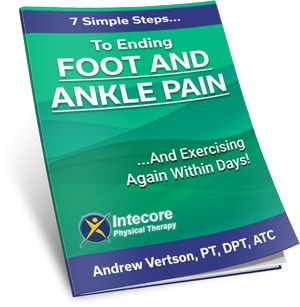Have you got annoying wrist pain that just won’t go away?
Wrist pain is increasingly common in the US and the rest of the Western world due to our continued use of (read: addiction to) computers, smartphones, and other digital devices. I mean, we’re never off them, are we?
Texting, typing, scrolling, and moving a mouse around (especially) all take their toll on the wrists. Our love of sports and floor-based exercise like yoga and Pilates all put additional strain on the wrist too. Think: downward-facing dog, bodyweight planks, and handstands. But having said that, there are many other reasons why you might have wrist pain too.
We know that chronic wrist pain can hinder your daily routine and affect your quality of life quite severely. However, until there is a problem with them, we realize how much we use our wrists every day. Plus, the wrist isn’t just a single joint. It’s a collection of small bones and joints where the forearm and the hand connect. It’s a busy junction – with tendons, ligaments, nerves, and veins all running through the wrist too.
But what can you do about it once wrist pain starts?
Are there any specific exercises you can do to ease the pain?
Well, we’ll get on to that, but before you can take steps to fix it – you need to know what is causing your wrist pain.
What Causes Wrist Pain?
Pain in the wrist can occur for many reasons, from a traumatic impact, illness, or injury to repetitive strain, auto-immune-related inflammation, or arthritis. It could even be something as simple as an overstretched ligament. The most important thing is to find the root cause so that we can treat it effectively.
This blog explores the leading causes and symptoms of wrist pain and the exercises and treatments that reduce inflammation, decrease pain, and improve wrist, forearm, and hand mobility.
The most common causes of wrist pain are:
- An injury or sudden trauma to the tendons, ligaments, or bones in the wrist or surrounding structures. This type of pain usually comes on suddenly as a direct result of the injury or impact.
- Repetitive stress on the wrist from repetitive movements such as typing or moving a computer mouse, other job-related repetition, or sports.
Wrist pain also occurs because of specific medically diagnosable conditions, such as:
Carpal Tunnel Syndrome: This condition occurs when a ligament inside the wrist swells and applies pressure on the nerve. The inflammation associated with Carpal Tunnel Syndrome squeezes the nerve, which leads to weakness, numbness, and pain in the wrist. Patients who have arthritis or diabetes or are obese have a higher risk of developing this condition. We also find it in individuals who carry out repetitive activities as part of their job or use vibrating equipment.
De Quervain’s Disease: This painful condition causes the tendon and the sheath covering the thumb area to swell and inflate. There is no exact reason for this condition other than we often see it with repetitive movements or injuries. Its symptoms manifest in a specific form of swelling, weakness, and a grating sensation in the thumb, forearm, and wrist.
Triangular Fibrocartilage Complex Injury: This less talked about condition occurs on the wrist side of the smallest finger. The cartilage provides support and acts as a cushion for the bones. Over time, it can wear away, or injury can lead to inflammation and pain, leading to wrist pain.
Osteoarthritis: This common degenerative condition leads to inflammation in the joints, which happens when the bones’ cartilage wears away. It can afflict all kinds of joints, including the wrist. This condition is common in middle-aged and beyond, especially those with a family history of osteoarthritis.
Repetitive Motion Syndrome: As the name says, repetitive motion syndrome occurs when patients repeat tasks for a long time, e.g., typing all day at work. When joints in the wrists are overworked, it leads to inflammation that applies pressure to the nerves in the wrist area. This syndrome can affect different joints, but it is common in the wrist region.
Rheumatoid Arthritis: Unlike osteoarthritis, a degenerative disease, Rheumatoid Arthritis (RA) is an autoimmune condition. In RA, the immune system attacks healthy tissues. If Rheumatoid Arthritis afflicts the joints in the wrist, this can lead to swollen and painful wrists.
Wrist Tendonitis: Like other forms of tendonitis, wrist tendonitis happens when the tendons in the wrist get inflamed or irritated, and small tears develop in the tendons. It mainly occurs because of the wrist moving repetitively during sports or work-related activities.
Ganglion Cyst: When fluid-filled ganglion cysts form in the soft tissues on the palm side of the wrist, it can cause wrist pain. Unusually, it is the smaller cysts rather than the large ones that cause the most pain.
Wrist Bursitis: The bursae are tiny fluid sacs that serve as cushions for joints. In cases where these sacs are inflamed, we medically term it “Bursitis.” Apart from the wrist, they can also occur in different parts of the body.
Wrist Sprain: A sprained wrist mainly occurs because of “catching yourself when you fall.” When you put your hands out to cushion your fall and involuntarily bend the wrist backward when you hit the ground, this sudden impact strains the ligament and causes wrist sprain and the associated pain.
What Are The Symptoms Of Wrist Pain?


The symptoms of wrist pain differ depending on the cause. In some, it can be a sharp pain, while in others, it may be dull, with the location of the pain differing too. Apart from pain, other symptoms may include inflammation, tingling, bruising, numbness, and weakness.
Other less common symptoms include:
- A clicking sound when you move your wrist
- Difficulty holding or gripping objects
- Stiffness in the wrist or finger joints
All the above symptoms are clues that help us decipher the root cause of your wrist pain, so it’s essential to report them to your doctor or physical therapist. Initially, your symptoms may be mild but may increase in severity if less untreated. You may also experience increased pain when you perform specific movements or activities.
When to consult a doctor: If your wrist pain is severe, basic hand movements become a challenge, or you experience severe weakness, inability to grasp or tingling, and numbness accompanied by a loss of sensation, we recommend you have your symptoms assessed by a doctor right away.
How Does Physical Therapy Help With Wrist Pain?
Physical therapy and therapeutic exercises for wrist pain are the most effective ways to treat wrist-related conditions and chronic pain.
As a physical therapy practice with a particular interest in wrist pain, we help you:
Manage Pain: We do this by identifying the root cause of your pain and suggesting remedial movements to reduce stress on the joint and prevent pain. We may also recommend hot and cold packs or using a wrist brace in between sessions to reduce inflammation, lessen the pain and its effect on your daily life, and speed up recovery.
With Manual Therapy: Dependent on your presenting symptoms, we may use manual therapy to reduce your wrist pain. These specialist techniques include therapeutic massage, stretches, and joint manipulation. We may also recommend range-of-motion movements to remove stiffness and aid in proper movement.
Guide and Educate You: Prevention is better than cure. Therefore, towards the end of the recovery process, we guide and educate you on how to resume your daily activities without aggravating your wrist and causing a reoccurrence of pain. In addition, this information includes how to use the wrist neutrally when doing repetitive tasks.
Restore Wrist Functionality: Along with improving your symptoms, we demonstrate how to carry out specific movements with the right wrist movements to restore functionality and return to a pre-pain state. This knowledge helps you resume your routine activities while remaining pain-free.
Exercises You Can Do At Home To Strengthen The Wrist
During physical therapy sessions, the exercises we teach you are an essential part of a wrist pain recovery plan. They’re specific to the root cause of your wrist pain. Some conditions require movement. Others require rest. So, it’s essential to get checked out and have a PT diagnose the problem before starting any new exercise routine, especially if you’re in severe pain. But here is a simple exercise that you can do at home to help tackle wrist pain.
- Step 1: Put your arm straight out in front of your body with your palm facing downwards.
- Step 2: Slowly start bending your wrist until your fingers are pointing to the floor below.
- Step 3: Gently place the other hand on top of your downward-facing fingers and pull towards your body to get more of a stretch.
- Step 4: Hold for 60 seconds, then repeat on the other wrist.
*If this exercise causes an increase in pain – stop immediately and contact a physical therapist.
So, looking for a helping hand to disband your wrist pain? Get in touch with us through the Intecore PT contact page.
Don’t feel embarrassed about your condition, let us help you!
- 7 Ways to Get Rid of Tension Headaches Naturally - July 1, 2025
- Why Are My Feet Swollen? Common Causes Explained - June 2, 2025
- What Is Restless Leg Syndrome? Symptoms, Causes, and Relief Options - May 5, 2025
















